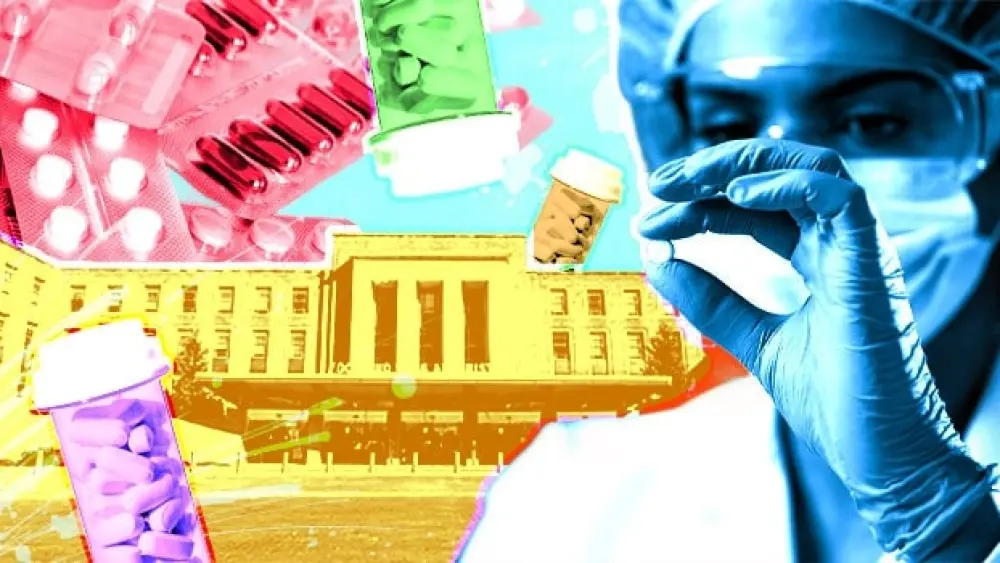There is growing investment in fighting bacterial growth in a wide range of settings, with the market estimated to reach more than $3 billion within eight years.
Pictured: Antimicrobial susceptibility resistance test by diffusion on black background/iStock, Nicolae Malancea
The worst nightmare of any patient admitted to a hospital is leaving sicker than when you entered. However, that is the reality for tens of thousands of patients each year, with as many as one out of every 25 patients admitted in the U.S. leaving with a new pathogen, according to the Centers for Disease Control (CDC). Around the world, such hospital-acquired infections cause 40,000 deaths annually, a 2021 study found. And in many cases, biofilms are to blame.
With insurance providers, including Medicare, refusing to reimburse for care associated with hospital-acquired infections, resulting in $350 million per year in bills that hospitals must pay, there is a growing market for products to fight the growth of biofilms. In 2022, the global biofilm treatment market hovered around $1.3 billion. By 2032, it’s projected to nearly triple to $3.5 billion, and Marc Edwards, the president and CEO of biofilm treatment developer Kane Biotech in Winnipeg, Manitoba, said that’s an underestimate because it’s not just the medical sector that suffers consequences of biofilm development.
“Everywhere you find bacteria looking to survive, you’ll find biofilms,” he told BioSpace. “Oil and gas pipelines will grow a biofilm despite having almost no water, so it is very hard to measure the biofilm market.”
Biofilms in the Cross-Hairs
Kane has been “laser-focused” on biofilm for the past 20 years, Edwards said, and is preparing to move products like Revyve, an antimicrobial wound gel, and DispersinB, another wound gel, into Phase I clinical trials with support from the U.S. Department of Defense.
“Biofilms are the biggest unresolved problem in wound care,” Edwards said.
Patricia Nadworny, the chief scientific officer at Innovotech in Alberta, said the prevalence of experimental biofilm treatments for wound care is something she wouldn’t have predicted.
“Fifteen years ago, biofilms were barely mentioned in the context of wound care, but it has become clear that nearly all chronic wounds contain biofilms, and so it is a very hot topic right now,” she told BioSpace.
Simon Pratt, the senior director of commercialization at Irvine, Calif.–based Pangea Laboratory, said his company has also been busy studying ailments like respiratory illnesses and infectious diseases but is now eyeing biofilm prevention in wound care and medical devices.
Like Edwards, Pratt emphasized that the market for such products would extend well beyond the medical industry. For example, wastewater applications are a key area with plenty of opportunities for biofilm development. Nadworny said that agriculture, dentistry, industrial water-cooling systems and food handling and processing are other areas of potential for deployment.
Another industry that could benefit from effective approaches to fighting biofilms is the oil and gas sector, she added, noting that “biofilms are responsible for 20 to 30 percent of pipeline corrosion.” Biofilm-resistant coatings could prevent pipeline breaks, reducing environmental and financial damage from them, she said.
However, Nadworny noted that such applications are not currently the focus of biofilm treatment developers. “The medical device industry has been one of the earlier industries to recognize the importance and impact of biofilms in hospital-acquired infections.”
The Road Ahead for Anti-Biofilm Products
Pratt said that one of the key challenges for the anti-biofilm market is that there is “minimal standardization” across applications. Nadworny agreed that the lack of language standardization around biofilms creates confusion.
“There is a need for more clearly defined standards for testing and claims that can be made about products, and steps taken to ensure that there isn’t rebranding of products as ‘anti-biofilm’ that shouldn’t be making that claim,” she said. “It can lead to people writing off a whole category of products as something that doesn’t work when, in fact, it’s just one badly designed product giving that product category a bad name.”
Pratt added that antimicrobial resistance is a massive issue in the study and development of biofilm applications right now. Such resistance is on the rise. In 2019, the World Health Organization estimated that antimicrobial resistance to infections directly caused 1.27 million global deaths and was indirectly responsible for another 4.95 million. Biofilms may be contributing to this trend, and the development of anti-biofilm products will certainly be affected as a result.
But that hasn’t deterred companies from trying, Nadworny said. “I would say that there is a general trend where we are seeing more activity in the biofilm space globally.”
Karen Fischer is a freelance science writer based in New Mexico. Reach her at kfischerwrites.com.





